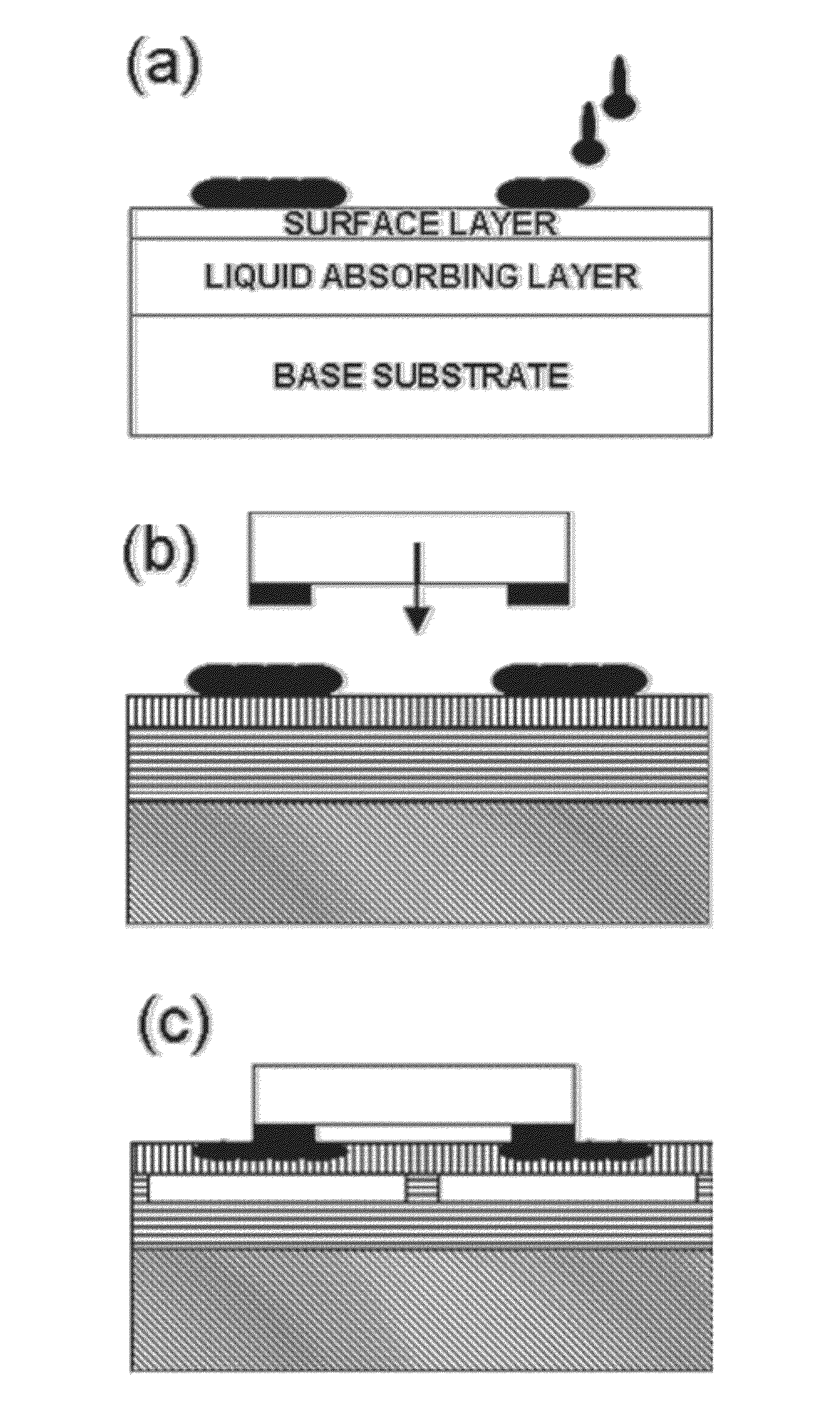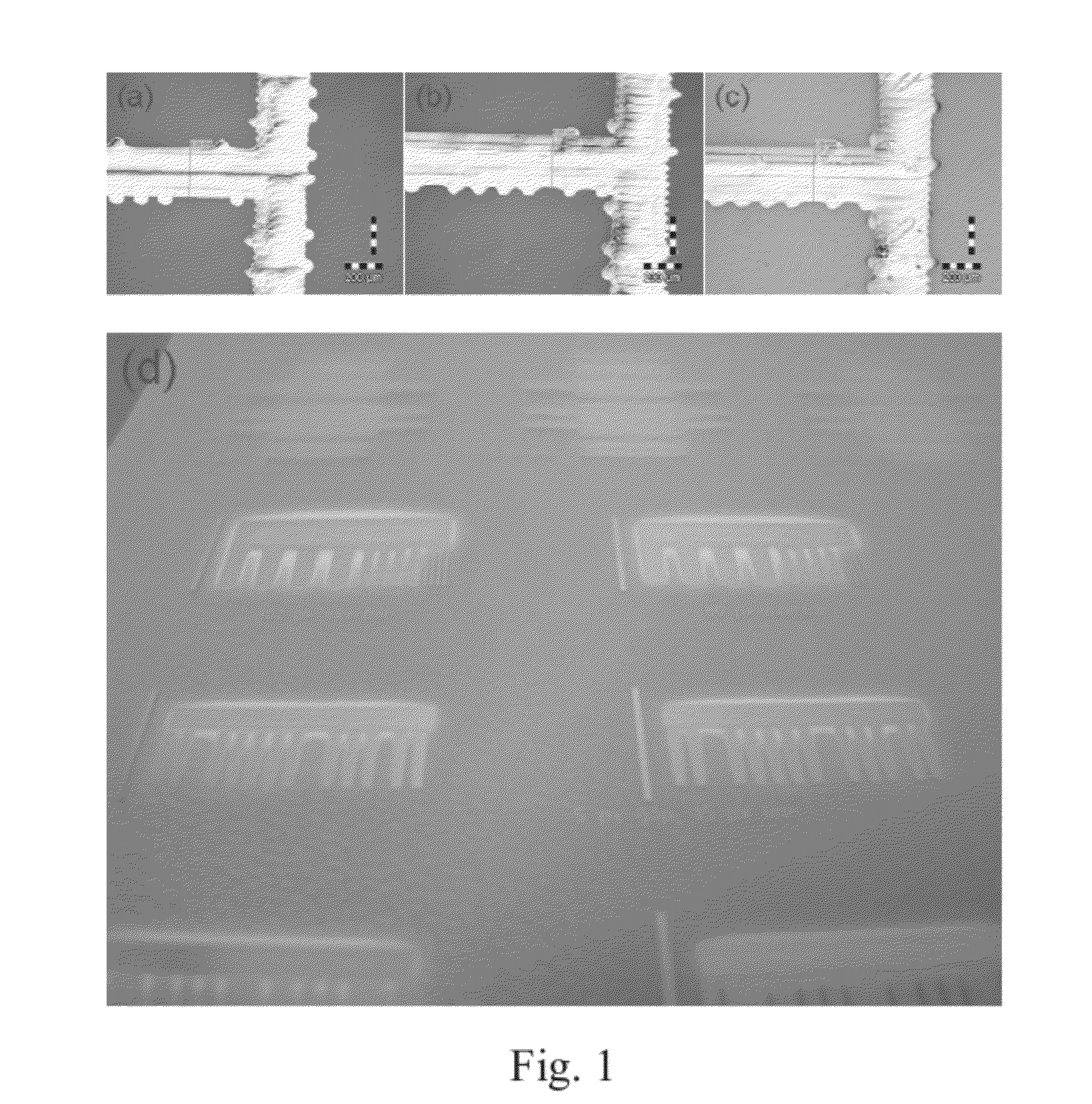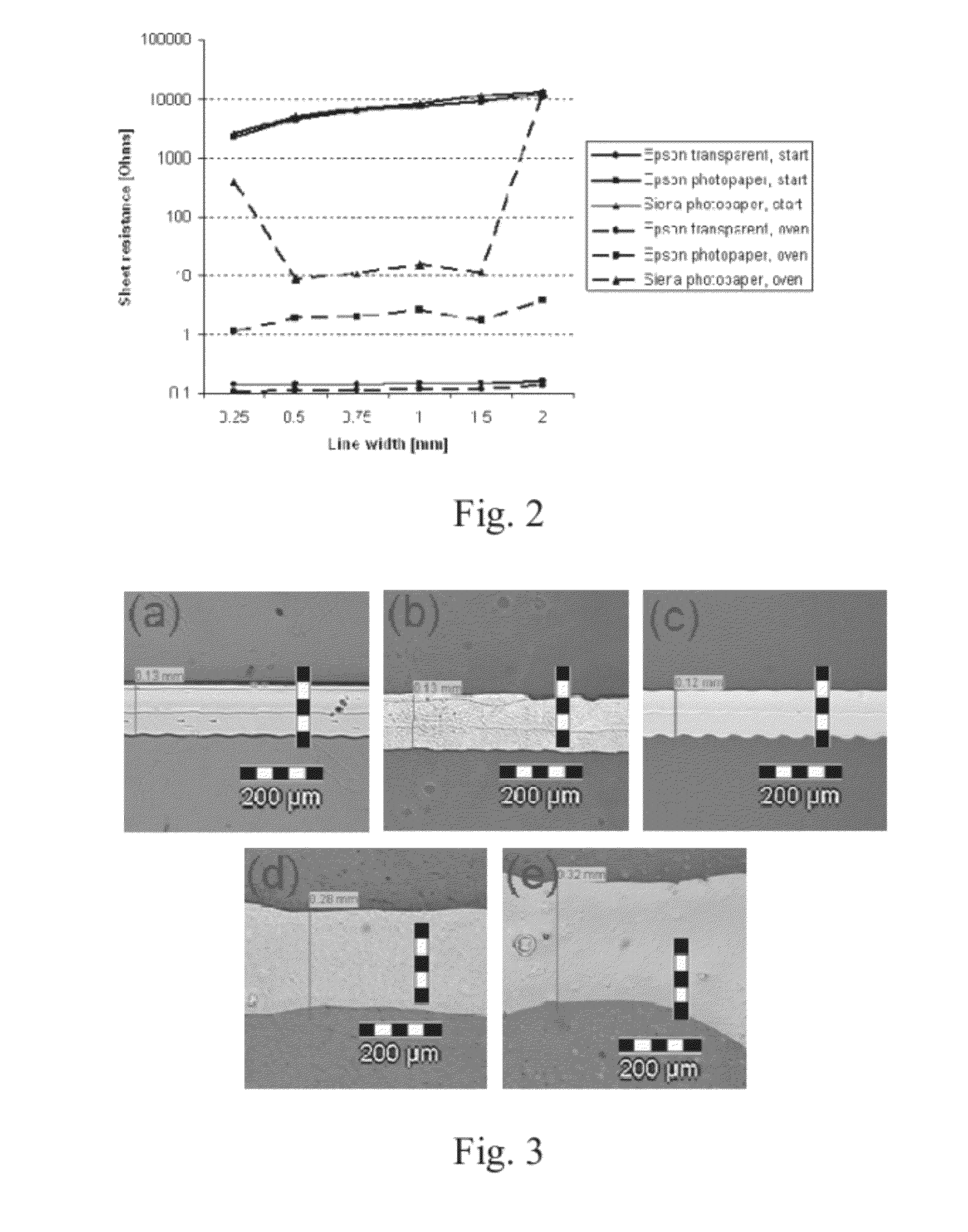Method and products related to deposited particles
a technology of deposited particles and deposited particles, which is applied in the field of encapsulated particles, can solve the problems of difficult curvature required for the efficient removal of encapsulant, expensive equipment and a controlled environment, and the cost of process stage of integrated silicon based microchips or other discrete components with printed circuitry (antenna), and achieve good electrical and mechanical contact of components to the substra
- Summary
- Abstract
- Description
- Claims
- Application Information
AI Technical Summary
Benefits of technology
Problems solved by technology
Method used
Image
Examples
examples
[0072]The following examples demonstrate the invention with suitable commercially available nanoparticle inks and coated substrates.
[0073]Since inkjet printing substrates are engineered to provide fixation of the inks on the substrates, one could expect to have strong fixation also for some metallic nanoparticle ink formulations. For pigmented inks, fixation is obtained by the chemical reaction between the pigment coating and the surface layer of the substrate in a self-fixing manner. For the substrate facilitated removal of the encapsulating material of printed electronics inks / pastes, the affinity of the printing substrate for the capping material should be so strong as to break the encapsulating molecule—particle core bonds and release the particle cores into physical contact.
[0074]The results of the example tests presented here were conducted with Advanced Nano Products DGP-45LT-15C ink, which consists of silver nanoparticles with a nominal particle size of 10-20 nm and a trieth...
PUM
| Property | Measurement | Unit |
|---|---|---|
| size | aaaaa | aaaaa |
| size | aaaaa | aaaaa |
| diameter | aaaaa | aaaaa |
Abstract
Description
Claims
Application Information
 Login to View More
Login to View More - R&D
- Intellectual Property
- Life Sciences
- Materials
- Tech Scout
- Unparalleled Data Quality
- Higher Quality Content
- 60% Fewer Hallucinations
Browse by: Latest US Patents, China's latest patents, Technical Efficacy Thesaurus, Application Domain, Technology Topic, Popular Technical Reports.
© 2025 PatSnap. All rights reserved.Legal|Privacy policy|Modern Slavery Act Transparency Statement|Sitemap|About US| Contact US: help@patsnap.com



